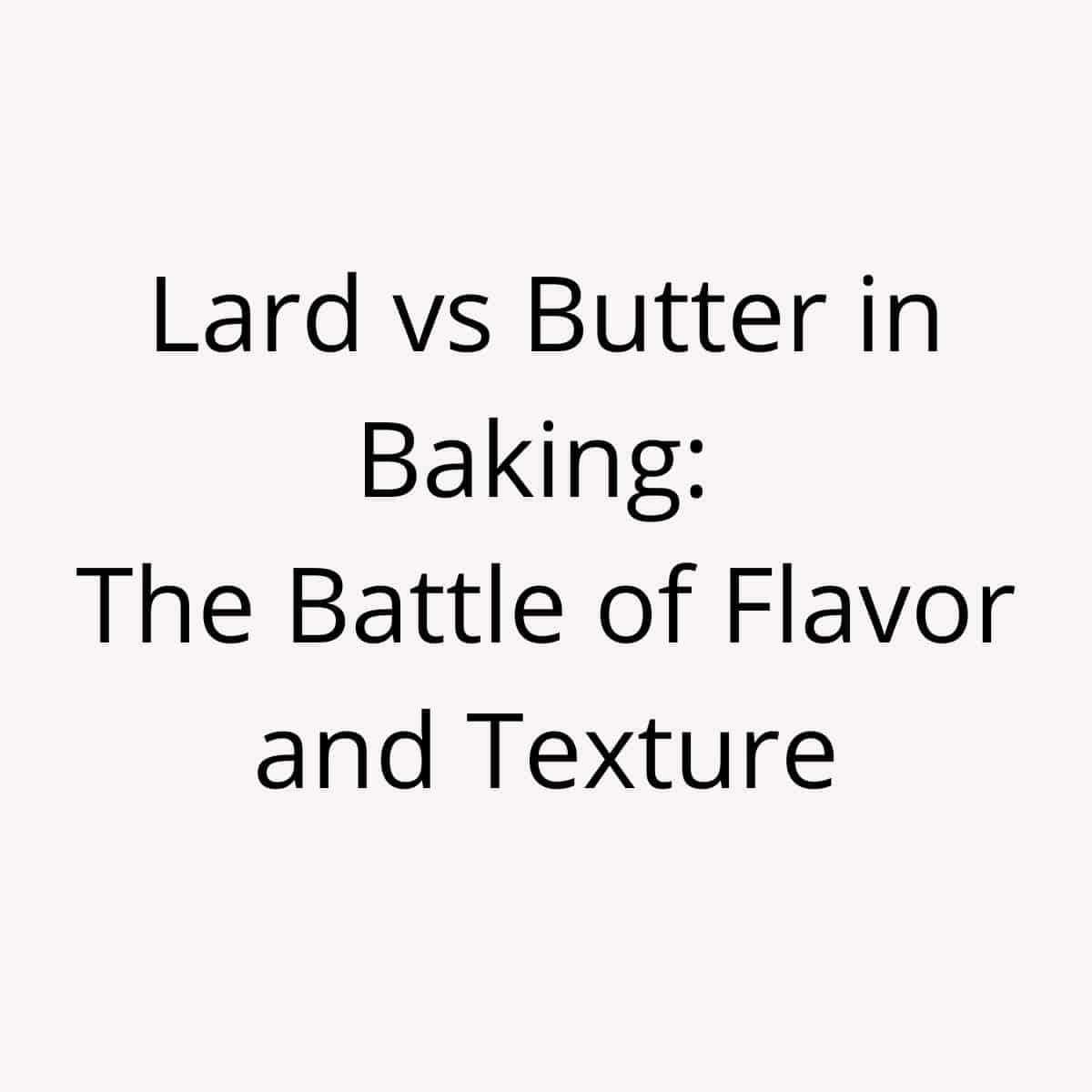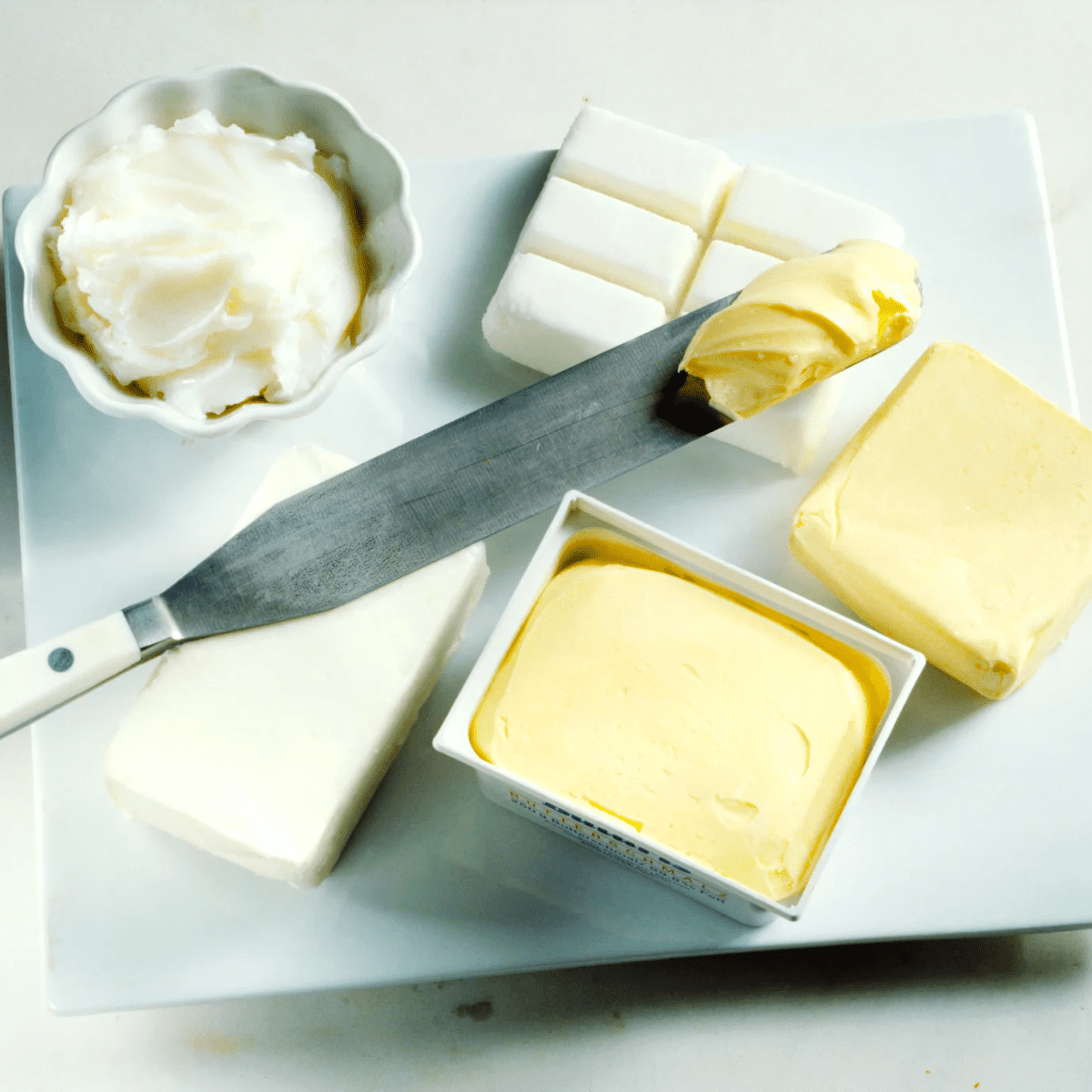Lard and butter have been used in cooking and baking for centuries, but they have very different properties and flavors. Understanding the main differences between these two types of cooking fats can help you make the best choice for your recipes, depending on what you want to achieve.

The Role of Butter in Baking
Butter is a dairy-based product made from churning cream until it becomes solid. It has been used in baking since the early 1900s and is known for adding richness, creaminess, and a unique flavor to baked goods. Unsalted butter is a great way to add flavor and richness to your baked goods without increasing the salt content.
Butter has a solid form when kept in the refrigerator, but it softens at room temperature and becomes liquid when heated. This makes it ideal for pastry chefs who want to create a butter crust or a buttercream frosting.
However, one of the downsides of using butter in baking is that it has a high-fat content, which can cause the fat crystals to separate when exposed to high temperatures. This can result in baked goods with a greasy or dense texture.
The Role of Lard in Baking
Lard, on the other hand, is a type of fat that is rendered from animal sources, usually pork fat. Lard has a similar fat profile to butter, but it has a higher smoke point and can be used at higher temperatures without burning.
Lard has a solid state at room temperature and can be kept in the refrigerator for an extended shelf life. It is known for its high-fat content, which can make it a good option for creating flaky pie crusts and baked goods with a crumbly texture.
In the late 20th century, lard got a bad reputation due to health concerns associated with animal fat consumption. However, recent research has shown that lard is not necessarily bad for your health, as long as you consume it in moderation.

The Main Differences Between Lard and Butter
The main difference between lard and butter in baking is their flavor and texture. Lard has a mild pork flavor and is ideal for creating flaky pie crusts and crumbly textures in baked goods. Butter, on the other hand, has a rich, creamy flavor and is ideal for creating moist and tender crumb and adding richness to baked goods.
Another difference between lard and butter is their water content. Lard has very little water content, which makes it ideal for deep frying and cooking at high temperatures. Butter, on the other hand, has a higher water content, which can make it less ideal for cooking at high temperatures.
Alternatives to Lard and Butter
If you are looking for a butter substitute in your baking recipe, there are several options available in grocery stores today. Vegetable shortening, cottonseed oil, soybean oil, hydrogenated vegetable oils, and palm oils are all types of shortening that can be used as a substitute for butter.
Plant-based butter alternatives like coconut oil, avocado oil, and liquid fats are also gaining popularity as healthier and more sustainable options. These alternatives have a similar fat profile to butter and can be used in baking recipes with good results.
When substituting butter for lard or vice versa, keep in mind the differences in melting point and adjust the recipe accordingly. And when substituting vegetable shortening for lard or butter, look for a product that is labeled as trans fat-free.
Lard vs Butter: Which is better for baking?
Now that we've explored the properties of lard and butter, let's compare and contrast them in terms of taste, texture, and performance in baked goods.
Taste: Lard has a neutral flavor that allows other ingredients to shine, whereas butter has a rich, buttery flavor that adds depth and complexity to baked goods.
Texture: Lard is a solid fat that has a high melting point, which makes it ideal for creating a flaky or crumbly texture in baked goods. Butter is a softer fat that has a lower melting point, which makes it ideal for creating a smooth and creamy texture in baked goods.
Performance: Lard is ideal for high-heat applications like deep-frying and for creating flaky crusts in baked goods. Butter is ideal for creating moist and tender crumb in baked goods, as well as for adding richness and flavor.
In terms of health considerations, lard and butter both contain saturated fat, which can increase the risk of heart disease when consumed in excess. However, lard contains less cholesterol than butter, and some studies suggest that it may be a healthier option than butter.
Key Takeaways
- Lard and butter are two of the most commonly used ingredients in baking.
- Lard is a solid fat that has a high melting point and a neutral flavor, making it ideal for creating a flaky or crumbly texture in baked goods.
- Butter is a softer fat that has a lower melting point and a rich, buttery flavor, making it ideal for creating a smooth and creamy texture in baked goods.
Whether you choose to use lard or butter in your cooking, it's important to consider the role of these cooking fats and to use them in moderation for the best results. Happy baking!



Britani Cowdin
Hello 👋 is it better to use lard or butter in banana bread?
Also, the same question for sugar cookies?
Thanks!
Megan
Hey! I'm sorry for the late reply but in banana bread, oil is definitely the preferred source of fat. It helps lock in moisture which gives your bread a dense and decadent texture. For sugar cookies definitely butter! Always make sure your dough is chilled before baking your cookies! Let me know if you have any more questions!